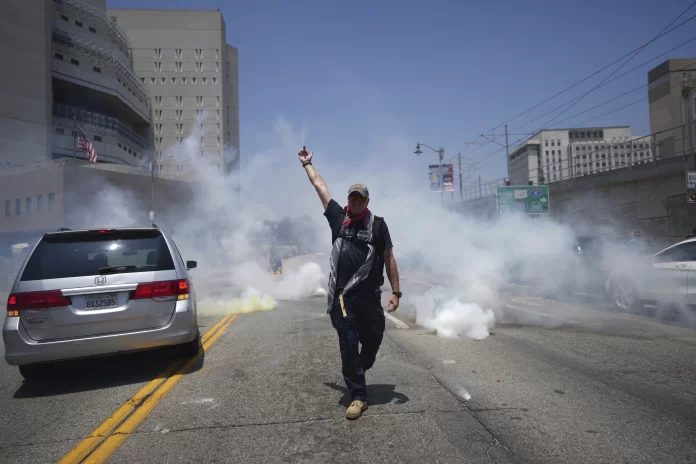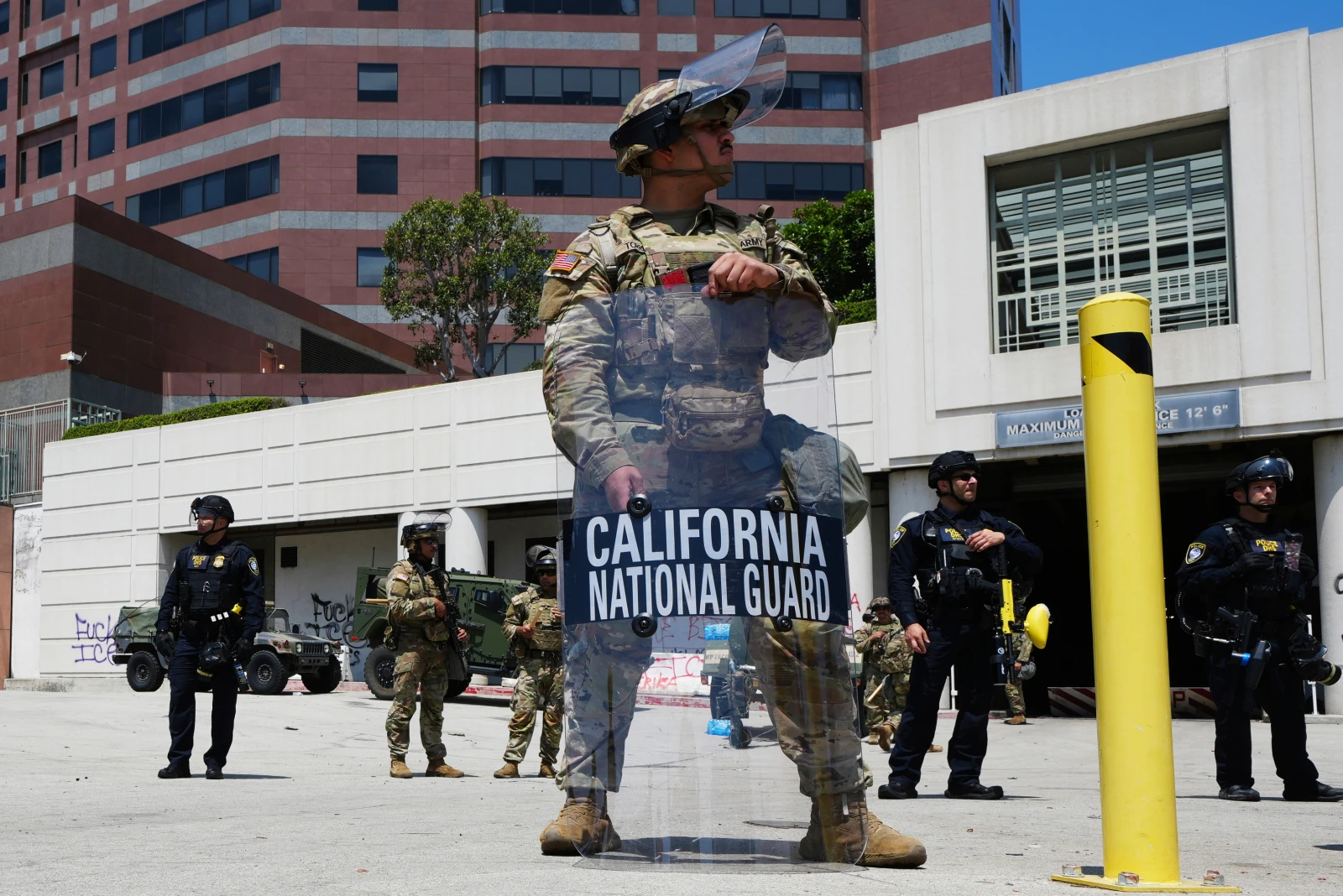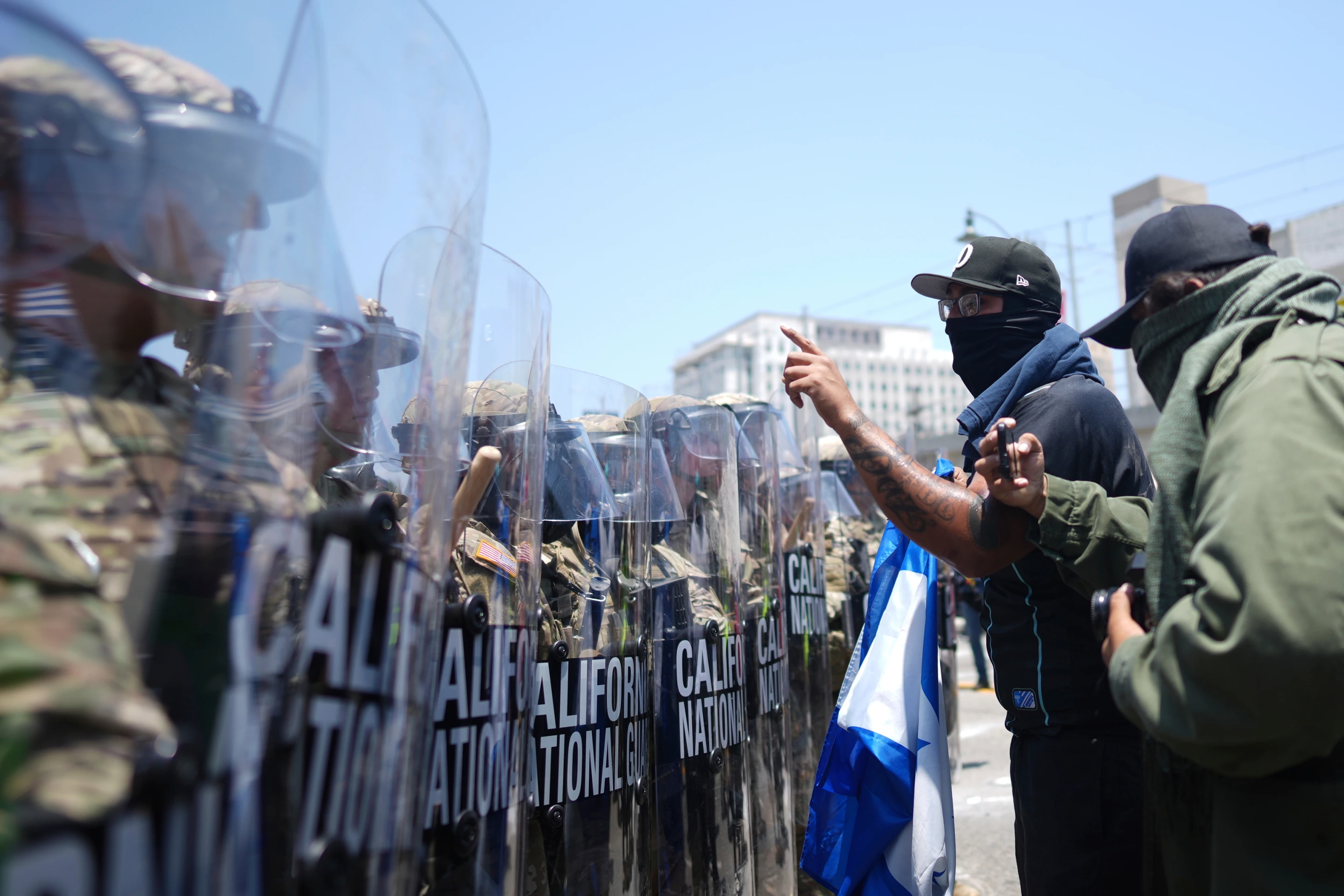Trump Deploys Thousands of Troops to L.A. as Immigration Raids Spark Nationwide Unrest
National Guard troops in Los Angeles are now providing protection for ICE agents conducting immigration raids—marking a sharp escalation in President Donald Trump’s latest crackdown on undocumented immigrants. Over 4,000 National Guard members and 700 Marines have been ordered into the city, bypassing both Governor Gavin Newsom and Mayor Karen Bass, whose legal objections have so far been ignored.
This unprecedented move pushes federal troops closer to direct involvement in law enforcement actions. Photos posted Tuesday by ICE show National Guard troops standing in formation around officers arresting individuals. ICE officials claimed the troops are “providing perimeter and personnel protection,” but critics warn the line between support and participation is being dangerously blurred.
Federal Overreach? Newsom Fights Deployment in Court
Governor Newsom filed an emergency motion Tuesday in federal court to block Trump’s use of the military in immigration raids. The filing came a day after California Attorney General Rob Bonta filed a separate lawsuit, arguing the president has overstepped his authority by invoking a rarely used federal power under Title 10 to override state control of the Guard.
“This is a deliberate attempt to create chaos in our city,” said Mayor Bass, calling the deployment both provocative and unnecessary. Los Angeles Police Chief Jim McDonnell echoed the concern, noting that the added troops have made it harder—not easier—to manage the demonstrations safely.
Protests Spark Nationwide as Immigration Raids Turn Violent
Demonstrations erupted Friday following aggressive ICE raids across Latino neighborhoods in L.A., including Paramount, Compton, and Downtown. Over the weekend, protesters blocked highways, set cars ablaze, and clashed with federal agents. Police responded with rubber bullets, tear gas, and flash-bang grenades. More than 100 people were arrested on Monday alone, mostly for failing to disperse.
Graffiti, broken windows, and looting were reported across downtown and Santa Ana. At the Walt Disney Concert Hall, workers spent Tuesday scrubbing anti-Trump slogans off the walls. In Santa Ana, armored National Guard vehicles now block federal buildings.
Although Marines haven’t yet hit the streets, they remain on standby with orders to “protect federal officials and property.” Marine Corps General Eric Smith emphasized that the Marines are trained for crowd control but have no arrest authority.
Trump Signals He May Invoke Insurrection Act
While Trump has so far stopped short of invoking the Insurrection Act, he left the door open on Tuesday. “If there’s an insurrection, I would certainly invoke it,” he said during an Oval Office appearance. Hours later, he described protesters as “animals” and “a foreign enemy” in a speech from Fort Bragg.
This isn’t the first time Trump has tested constitutional limits during his second term, but legal scholars warn this could be among the most serious. Title 10 of the U.S. Code allows the president to federalize National Guard troops in times of rebellion—but the law is vague, and historically it’s only been used with the consent of governors.
Georgetown law professor Steve Vladeck noted the gray area: “This is not the Insurrection Act, but it’s walking right up to the edge.”
Demonstrations Spread to Austin, Dallas, and San Francisco
The fallout has stretched far beyond California. Protests have erupted in cities like Dallas, Austin, and San Francisco, drawing national attention and condemnation from Democratic leaders. California’s congressional delegation called the deployment a “manufactured crisis,” accusing the president of staging conflict to justify his aggressive immigration agenda.
Defense Secretary Pete Hegseth defended the move, telling Congress on Tuesday: “We’re entering another phase under President Trump, where the National Guard becomes a critical component of homeland security.”
A Dangerous Echo of 1992
Comparisons are already being drawn to the 1992 L.A. uprising after the Rodney King verdict. Back then, National Guard troops were deployed only after Governor Pete Wilson and Mayor Tom Bradley requested federal help. This time, the deployment happened over the explicit objections of both.
While the current unrest has not yet reached the scale of the 1992 riots, the use of military force to suppress immigration-related protests has alarmed historians, civil rights leaders, and legal experts alike.
Trump’s claim that the city would’ve been “completely obliterated” without military intervention is being fiercely disputed by local officials who argue the show of force is only pouring gasoline on a fire.
A judge is set to hear Governor Newsom’s emergency request to block the military deployments on Thursday. In the meantime, Los Angeles remains on edge—under military watch, and caught in the crosshairs of Trump’s immigration war.










